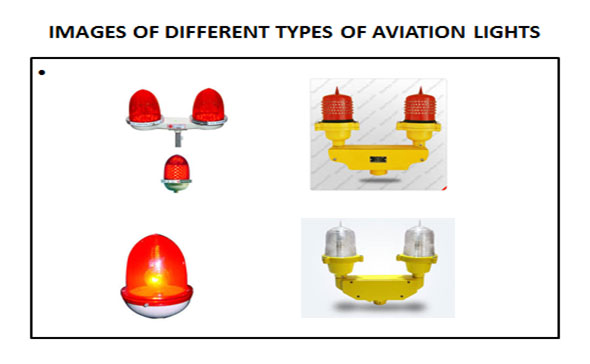Aviation Obstruction light
What is Aviation Obstacle Light ?
Definition –
Aviation obstacle light is a flash light that is installed on the top of the high rise structure which may be buildings or towers or chimneys.
These high rise buildings and structures such as chimneys & towers are potential hazards to aircrafts. Installation of Aviation Obstacle Lights (AOL) on tall buildings/structures etc definitely reduces the hazards to aircrafts with their presence.
TYPES OF AVIATION LIGHTES –
There are three types of aviation lights available – a) Low intensity, b) Medium Intensity & c) High Intensity.As per NBC2016, these lights are installed as per guidelines by ICAO (International Civil Aviation Organization)given in Annex-14, volume-1 Aerodrome Design & Operations. There are three types of obstruction lights used for aviation purpose – Low, medium & high intensity as per above guidelines –
- Low Intensity obstruction light – These lights are used where building/structure height is lower or up to 45 meter from ground. These lights are fixed-red lights and are further divided into two types – Type-A & Type-B. Type-A is minimum intensity of 10 Candles & Type-B of 32 candles. Such lights are intended for night use only.
- Medium Intensity obstruction light – These lights are used where building/structure height is between 45 meters – 150 meter from ground. These lights are further divided into three types – Type-A, Type-B & Type-C.
Type–A lights are – white colour flashing lights, Type-B lights are red colour flashing lights &type –C are red colour fixed lights.Such lights are intended for day & night use, ensuring that the lights don’t create disconcerting dazzles. Normally type-A light is used for day time & Type-B&C during night time .
- High Intensity obstruction light – These lights are used where building/structure height is more than 150 meter from ground. These two lights are further divided into two types – Type-A & Type-B. Both Type-A & Type-B lights are white clolour flashing lights with different light intensity. Such lights are intended for day & night use, ensuring that the lights don’t create disconcerting dazzles.
(Note– Low, medium & high lights are used in combinations also if required.)
LOCATION & NUMBER OF AVAITION LIGHTS –
Location –Arrangement of these lights should be such that the object is indicated from every angle or in other words, number of lights depends on the diameter of the structure.
Number of lights – Following points to be noted for the number of lights –
- 3 lights are required up to 6 meter of dia,
- 4 lights are required for more than 6 meter of dia,

Following points should be taken care while installing AO lights –
- Location of AO lights should be as close as to the top of the object,
- If any structure/building is extensive type or group of closely spaced objects, the top light shall be installed on the point edges of the highest objects so as to indicate the general definition and extent of the object.
- If two or more edges are of same height, the edge nearest the landing area shall be marked.
- In case of chimneys or other structure of same functions, the top lights should be placed below the top to minimize contamination by smoke, radiation etc.
- Any building which is covered by closely spaced two buildings which are taller than the covered building, AO light may be omitted.
- The position of AO lights should such that they should represent general definition of the object; if any light which don’t contribute to the object definition, may be omitted.
CONSTRUCTION–
These obstruction lights are now days made from LED, Xenon Lamps, Neon Lamps, Incandescent lamps etc. Obstruction lights shall be located as close as practicable to the top of the object. It may be connected with photocell controller so that when light is dim light gets on automatically and when sun light is enough then aviation light will be off automatically.
It is installed on the top portion of the building but height should be less than Lightning arrester.

